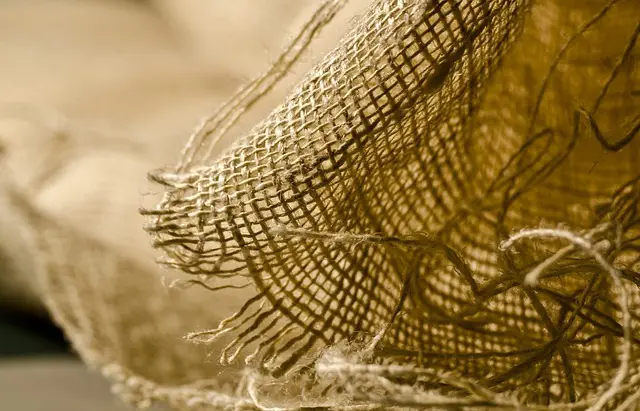Muscle soreness, particularly Delayed Onset Muscle Soreness (DOMS), often occurs after intense physical activity due to muscle fiber tears that trigger an inflammatory response. Kratom, a herbal remedy from Southeast Asia with active compounds like mitragynine and 7-hydroxymitragynine, has been studied for its potential to manage this soreness by interacting with opioid receptors to influence pain perception. Its alkaloids may offer analgesic effects that reduce pain, promote relaxation, and potentially enhance exercise performance and recovery. Kratom-facilitated flexibility is an emerging concept in wellness and sports communities, where it may aid in improving range of motion by combining with proper stretching techniques and rest. However, due to its potent effects and varying legal status, its use should be approached with caution, and individuals should seek professional advice before incorporating kratom into their routines for muscle soreness relief. The benefits of kratom-facilitated flexibility are promising, but it's crucial to consider safety and individual response, especially when using specific strains like Maeng Da for its energizing and analgesic properties. Always consult healthcare professionals before adopting kratom as part of a wellness regimen to ensure safe and effective use for pain relief and improved flexibility.
Muscle soreness can be a persistent companion for individuals engaging in intense physical activities, from athletes to fitness enthusiasts. This article delves into the natural approach of using kratom to alleviate such discomfort. Known for its potential therapeutic properties, kratom may offer a solution not only for muscle soreness but also for enhancing flexibility through what is termed ‘kratom-facilitated flexibility.’ We will explore the science behind muscle soreness, the role kratom can play in providing relief, and provide a practical guide to its application. Join us as we navigate the intersection of natural wellness and physical performance.
- Understanding Muscle Soreness and Its Causes
- Exploring Kratom's Role in Alleviating Muscle Soreness
- Practical Guide to Using Kratom for Enhanced Flexibility and Pain Relief
Understanding Muscle Soreness and Its Causes

Muscle soreness, commonly referred to as delayed onset muscle soreness (DOMS), can occur after intense physical activity or exercise that your body is not accustomed to. This phenomenon is a result of microscopic tears in the muscle fibers, which trigger an inflammatory response and can lead to pain and tenderness. The severity of muscle soreness can vary widely among individuals and activities; it is often more pronounced after eccentric contractions, where the muscle lengthens while contracting. Understanding the underlying mechanisms of muscle soreness is crucial for those seeking effective relief strategies.
Kratom, a tropical evergreen tree native to Southeast Asia, has been traditionally used in herbal medicine and is gaining attention for its potential role in alleviating muscle soreness. Some studies suggest that kratom contains compounds, primarily mitragynine and 7-hydroxymitragynine, which may influence pain perception by interacting with opioid receptors in the brain. Additionally, kratom-facilitated flexibility could be beneficial for exercise performance and recovery. By potentially reducing the sensation of pain and promoting a sense of relaxation, kratom might aid in restoring muscle function more quickly after strenuous activity. However, it is important to approach the use of kratom with caution, as its effects can be powerful and complex, and more research is needed to fully understand its mechanisms and safety profile in this context. Users should consider consulting healthcare professionals before incorporating kratom into their wellness regimen, especially when dealing with muscle soreness.
Exploring Kratom's Role in Alleviating Muscle Soreness

Kratom, a plant from Southeast Asia with leaves that contain compounds known as alkaloids, has garnered attention for its potential role in muscle soreness relief. Users report that kratom-facilitated flexibility can be particularly beneficial post-exercise, suggesting that certain strains of kratom may interact with opioid receptors in the brain to reduce pain perception. The alkaloids present in kratom, primarily mitragynine and 7-hydroxymitragynine, are thought to be responsible for these analgesic effects. When it comes to muscle soreness, particularly that associated with delayed onset muscle soreness (DOMS) which often occurs after intense physical activity, kratom may offer a natural alternative to over-the-counter pain relief options. Its ability to alleviate discomfort could be attributed to these active compounds, which can modulate the body’s stress response and provide a sense of well-being that might help individuals cope with muscle soreness more effectively. Users describe a range of sensations from stimulating to sedating depending on the dose and strain, allowing for potential application both before and after exercise to enhance performance or aid in recovery. However, it is crucial to approach the use of kratom with caution due to its potential for side effects and its legal status varying by region; thus, individuals should consult with healthcare professionals before integrating kratom into their wellness routine for muscle soreness relief.
Practical Guide to Using Kratom for Enhanced Flexibility and Pain Relief

Kratom, a plant native to Southeast Asia, has gained attention in various health and wellness circles for its potential therapeutic properties. Among athletes and individuals seeking enhanced flexibility and pain relief, kratom-facilitated flexibility is emerging as a topic of interest due to the alkaloids present in the leaves, which may interact with the body’s opioid receptors to provide relief from muscle soreness. When incorporating kratom into a regimen aimed at improving flexibility, it’s crucial to approach its use responsibly and with understanding of the appropriate strains and dosages. The Mitragyna speciosa tree offers a variety of strains, each with distinct alkaloid profiles that can influence the user’s experience. For instance, Maeng Da kratom is renowned for its stimulating and pain-relieving effects, potentially enhancing muscle flexibility and range of motion during exercises or workouts. To maximize benefits, users should consider starting with a lower dose to assess their sensitivity and gradually increase as needed, always adhering to recommended guidelines and consulting with healthcare professionals when integrating kratom into an existing health regimen. It’s also imperative to combine kratom use with proper stretching techniques and rest periods to allow the body to recover and adapt, further promoting flexibility and overall well-being. By using kratom judiciously as part of a comprehensive approach to fitness and health, individuals may find significant relief from muscle soreness and an improvement in their flexibility.
muscle soreness, kratom benefits, natural pain relief, kratom for flexibility, muscle recovery, kratom and exercise recovery
In concluding our exploration of muscle soreness relief, it is evident that kratom may offer a beneficial solution for those experiencing discomfort associated with rigorous physical activity. By understanding the mechanisms behind muscle soreness and its various causes, one can better appreciate how kratom-facilitated flexibility can be instrumental in alleviating pain. The practical guide provided underscores the importance of proper dosing and strain selection when utilizing kratom for enhanced flexibility and natural pain relief. As a result, incorporating kratom into a holistic health regimen can play a pivotal role in accelerating muscle recovery and promoting overall well-being, making it a valuable tool for athletes and fitness enthusiasts alike.






